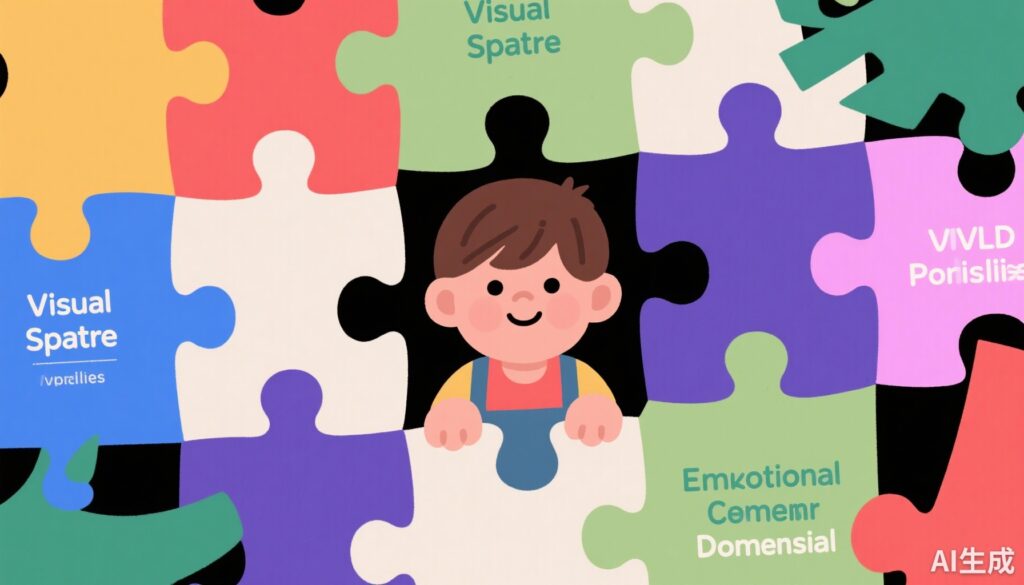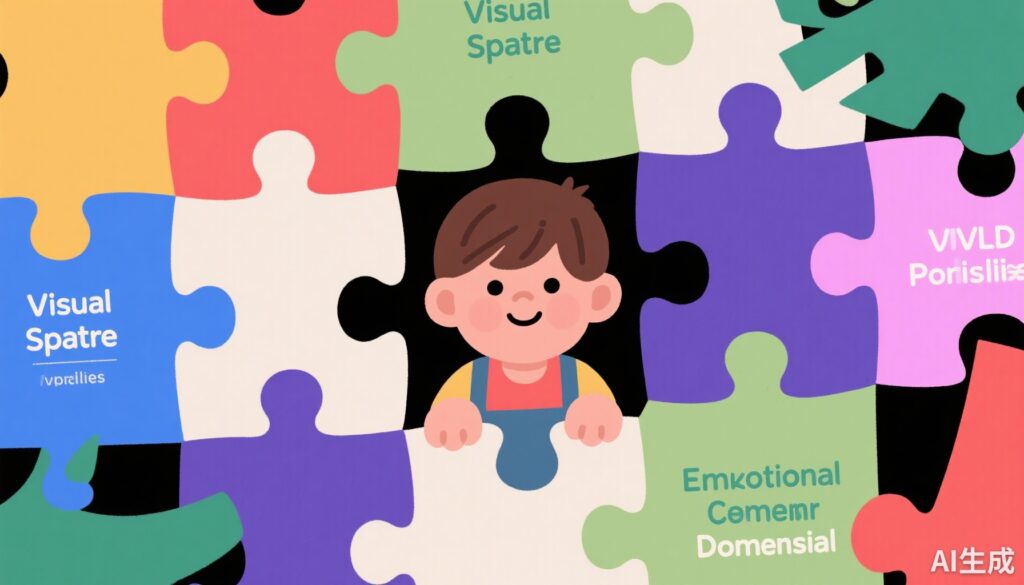Highlight
– Nonverbal learning disability (NVLD) exhibits clinical heterogeneity captured in four distinct profiles characterized by deficits in visual-spatial processing, reasoning, and variable psychiatric comorbidities.
– Three profiles revealed impairments in either or both visual-spatial and fluid reasoning abilities linked to academic performance deficits and specific psychiatric diagnoses such as anxiety and attention disorders.
– One profile lacked visual-spatial deficits but displayed lower verbal intelligence without functional impairments, suggesting the need to revise existing NVLD diagnostic criteria.
Study Background and Disease Burden
Nonverbal learning disability (NVLD) is a neurodevelopmental condition characterized by difficulties in visual-spatial processing, social skills, and motor functioning, first described in the 1960s. Despite longstanding recognition, the precise clinical profile remains debated, complicating diagnosis and treatment strategies. Variability in symptom presentation and overlap with other neurodevelopmental and psychiatric disorders contributes to diagnostic challenges. Children with NVLD often experience academic struggles, especially in math, reading comprehension, and social communication, leading to significant functional impairment and psychosocial burden. Understanding distinct phenotypic profiles could enhance diagnostic accuracy, facilitate targeted interventions, and drive research rigor.
Study Design
This investigation employed a cross-sectional design using data from the Healthy Brain Network (HBN), release 8 (2017-2021), a large community-based cohort assessing brain development and mental health in children and adolescents aged 5-21 years in New York City. Participants were recruited based on interest in research participation or clinical concerns, enriching the sample for behavioral, emotional, and learning difficulties. The study identified 180 children meeting research-defined criteria for NVLD from 1,640 participants with comprehensive cognitive, academic, and psychiatric data.
Using an unsupervised clustering algorithm, Louvain community detection, the study parsed NVLD heterogeneity by grouping participants based on patterns in diagnostic parameters including visual-spatial indices (Wechsler Visual-Spatial Index [VSI]), fluid reasoning ability (Fluid Reasoning Index [FRI]), academic performance, and psychiatric symptomatology. Associations with functional impairments and psychiatric diagnoses were further assessed. Analyses were conducted between April and September 2021.
Key Findings
The study identified four distinct NVLD profiles:
1. Profile 1 (44 children): Characterized by deficits in both visual-spatial (VSI mean 96.11) and fluid reasoning (FRI mean 77.18), this group showed the highest levels of inattention and aggression, alongside the lowest reading comprehension scores. These children exhibited significant academic and behavioral impairments.
2. Profile 2 (37 children): Displayed deficits limited to visual-spatial processing (mean VSI 78.27) with relatively preserved fluid reasoning. This group had the highest math scores and an increased prevalence of anxiety disorders (odds ratio 2.19). They had the lowest rates of specific learning disorders, suggesting a distinct cognitive-psychiatric profile.
3. Profile 3 (35 children): Exhibited fluid reasoning deficits (mean FRI 88.6) but intact visual-spatial functioning. Notably, this group achieved the highest reading comprehension scores, highlighting heterogeneity in academic outcomes among NVLD phenotypes.
4. Profile 4: Unlike the others, this profile showed no deficits in visual-spatial or fluid reasoning indices but had the lowest verbal intelligence (mean 87.12) and no significant functional impairments or psychiatric comorbidities. This suggests that these children may not meet traditional NVLD criteria, underscoring diagnostic complexity.
Correlational analyses revealed positive associations between visual-spatial or fluid reasoning scores and functional academic outcomes in profiles 1-3, confirming the clinical relevance of these cognitive dimensions. For example, in profile 2, fluid reasoning correlated positively with math performance (r=0.33, P<0.001).
Expert Commentary
This rigorous phenotypic delineation addresses longstanding heterogeneity in NVLD diagnosis by leveraging a large, clinically enriched population. The identification of discrete subgroups with divergent cognitive and psychiatric profiles advances understanding beyond the traditional, monolithic NVLD construct. Importantly, the finding of a profile lacking visual-spatial deficits but demonstrating reduced verbal intelligence without functional impairment warrants reconsideration of NVLD diagnostic criteria and raises questions about overlap with other developmental disorders.
Clinical implications include the need for differential diagnosis informed by neurocognitive profiles to tailor interventions effectively. For instance, attention and aggression management might be prioritized in profile 1, while anxiety monitoring is imperative in profile 2. Moreover, academic supports should be nuanced to accommodate strengths and weaknesses within each profile.
Limitations include the cross-sectional design, which precludes causal inferences, and the community-based recruitment, potentially limiting generalizability to clinical populations. Further longitudinal studies are needed to delineate developmental trajectories and treatment responsiveness.
Conclusion
This study underscores the heterogeneity within nonverbal learning disability, identifying four distinct cognitive and psychiatric profiles among affected children. Three profiles align with classical NVLD traits, including visual-spatial deficits linked to academic and psychiatric challenges. A fourth profile challenges conventional NVLD criteria, indicating potential over-inclusiveness or misclassification. These insights pave the way for refined diagnostic frameworks, improved personalized interventions, and focused research efforts to optimize outcomes for children with NVLD.
References
Margolis AE, DeRosa J, Kang M, Fisher PW, Thomas L, Southwick C, Broitman J, Davis JM, Nikolaidis A, Milham MP. Profiles in Nonverbal Learning Disability, Academic Skills, and Psychiatric Diagnoses in Children. JAMA Netw Open. 2025 Oct 1;8(10):e2533848. doi: 10.1001/jamanetworkopen.2025.33848. PMID: 41032301.
Additional relevant literature:
– Semrud-Clikeman M. Nonverbal learning disorders: A critical review. J Clin Exp Neuropsychol. 2000;22(4):518-536.
– Rourke BP. Syndrome of nonverbal learning disabilities: Neurodevelopmental manifestations. Guilford Press; 1989.
– Ladega-Bland C, Hale JB. Neurodevelopmental disorders and learning disabilities: Historical perspectives and current models. Child Adolesc Psychiatr Clin N Am. 2020;29(1):1-14.



